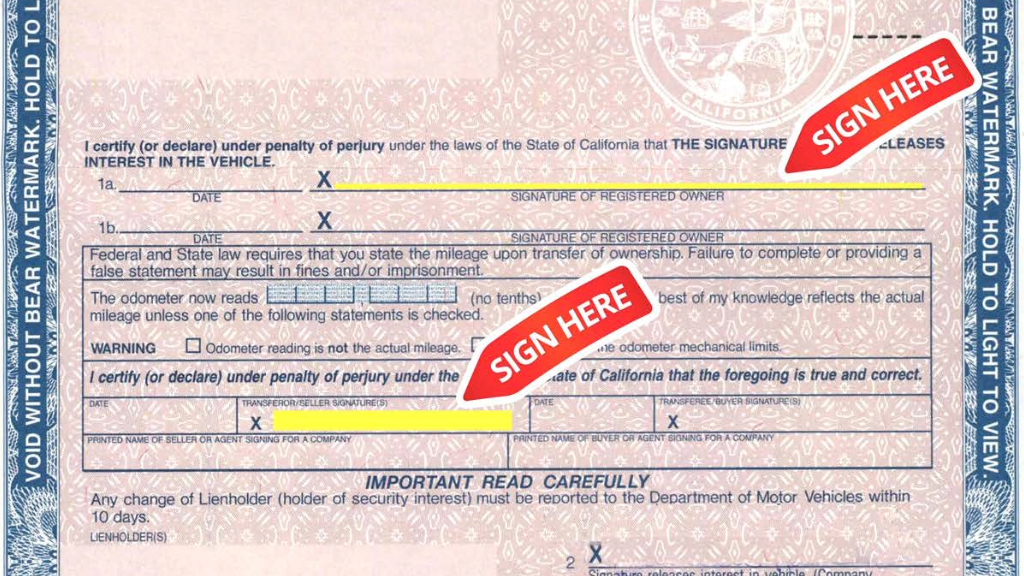How do I sign my California vehicle title?
Complete Guide to Preparing and Signing Your California Vehicle Title
Follow these steps to ensure a smooth and legal transfer of vehicle ownership in California.1. Verify Your Title
Ensure the title is in your name and free of errors. If your title is lost or damaged, you must request a duplicate from the California Department of Motor Vehicles (DMV) before proceeding with the sale.
2. Sign the Title Correctly
California does not require notarization for standard private-party sales, but all fields must be completed accurately on the front of the title (known as the "pink slip"):
Important: Avoid errors, white-out, or alterations — these can void the title.
3. Address Any Liens
If there is a lien on the title, it must be properly released by the lienholder. The lienholder can sign the release section on the title or provide a notarized lien release letter.
4. Multiple Owners
If more than one person is listed on the title:
5. Provide a Bill of Sale
While not always required, it's recommended to complete a Bill of Sale (Form REG 135) for your records and the buyer’s protection. This is especially helpful for tax reporting and liability issues.
6. Complete a Release of Liability
Sellers are required to notify the DMV of the sale within 5 days by submitting a Notice of Transfer and Release of Liability (Form REG 138). This can be submitted online at the California DMV website.
Key Takeaways
For more information and to complete forms online, visit the official California DMV website.








